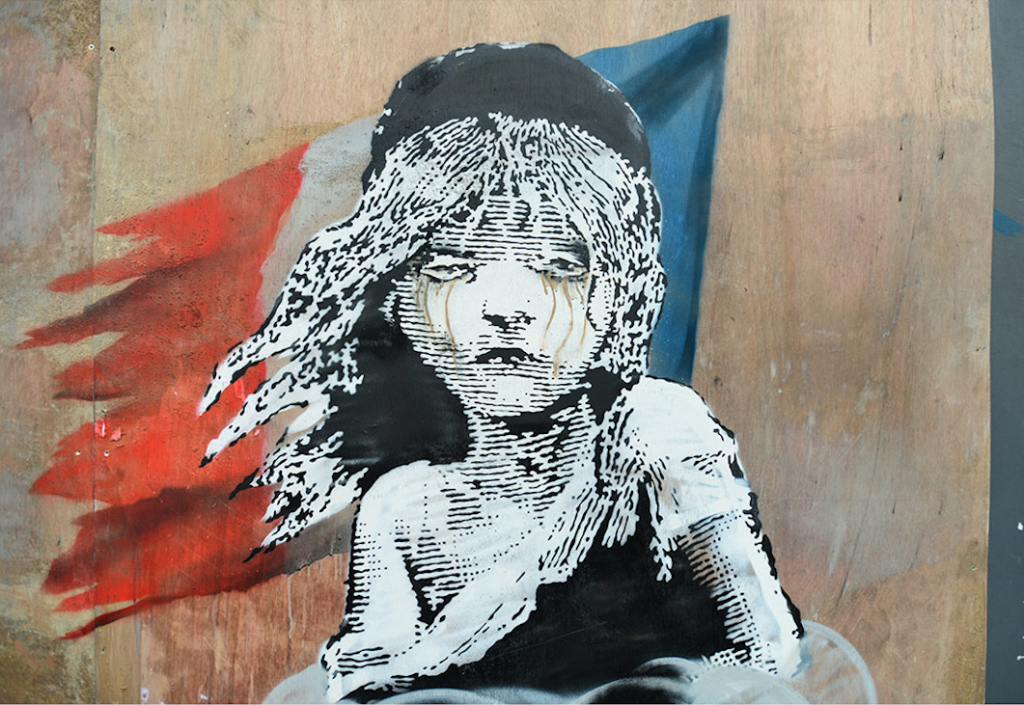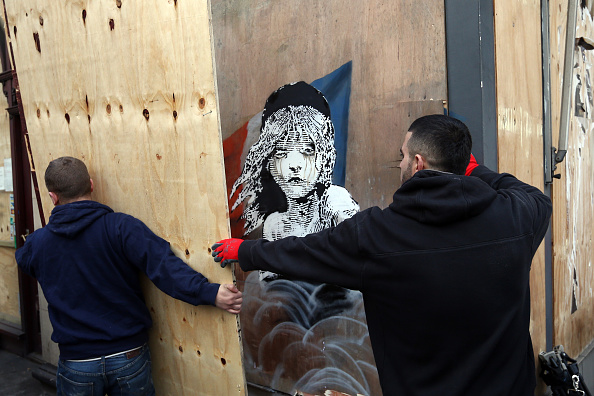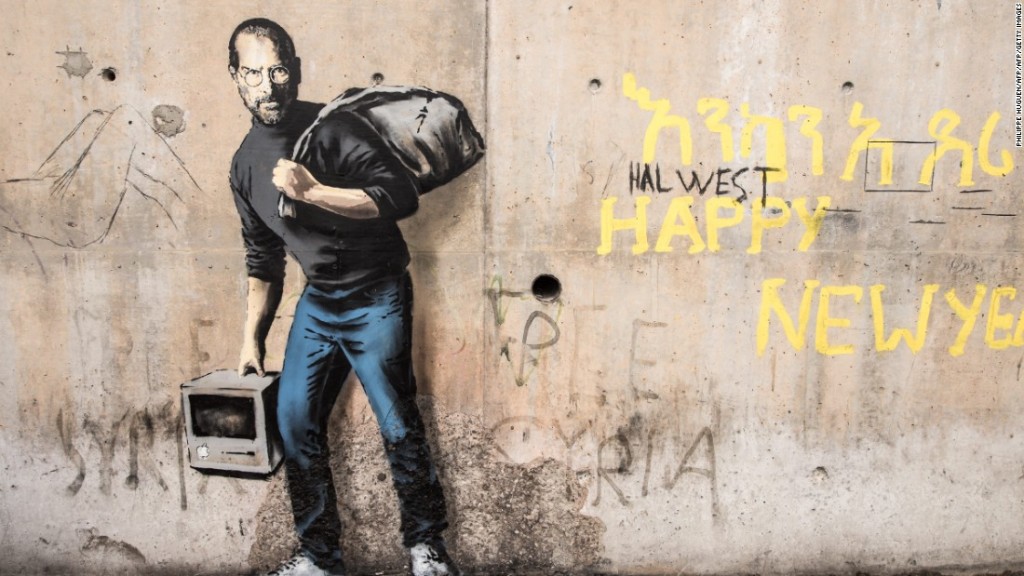At the time of writing, the fate of two separate artists’ works addressing Europe’s refugee crisis is in question. While one public piece criticizing the use of tear gas has been covered after an attempt to forcibly remove it, another artist’s installation has become a protest in its own right, responding to a new Danish law allowing police to seize migrants’ valuables. Addressing these uncomfortable realities, the artists call on society not to accept injustice as an acceptable response to crisis.
Behind these two stories are Banksy and Ai Weiwei, two of the world’s most prolific artists using their work as activism.
Six days into the new year, a video surfaced of police in the northern French port city of Calais raiding the city’s “Jungle” migrant camp in an overnight operation from January 5-6. The video shows police using tear gas, rubber bullets, and concussion grenades against the refugees.

Tears flow from the eyes of Les Miserable’s Cosette, assaulted by tear gas, in Banksy’s latest work after police raids on Calais’ refugee camp (Banksy.)
In response the Bristol-based British graffiti artist Banksy painted a mural of the iconic character Cosette from the French masterpiece Les Misérables, eyes swollen and crying from tear gas while positioned in front of the tricolor. The work was placed directly opposite the French Embassy in London.
The work bears a scannable QR code linking to a video of the January 5-6 police raid. The video linked to by the code is below:
Only two days after its reveal, Banksy’s piece has been covered by construction workers employed by its host building. While the fate of the work and motivation for covering it are somewhat unclear, the building developer has officially stated that covering the art came in response to a crowbar-wielding gang’s attempt to steal it. The attack on the piece left its sides damaged.
Mike Sadler, directer of the firm managing the property only stated that they were “discussing future plans for the artwork.”
Regardless of those future plans, Google has announced that it has preserved the piece digitally as part of its Street View feature and Cultural Institute Project.

Workers cover Banksy’s protest piece with plywood until the firm owning the building determines its fate (Carl Court/Getty Images.)
Banksy has confirmed on his website that the piece is his creation. Similar confirmed pieces have sold for well over $600,000 USD, explaining at least one possible motive for the attempted theft.
Banksy’s choice of subject matter comes as no surprise, as the artist has created multiple pieces at Calais’ Jungle, and donated the materials from last year’s dystopian theme park Dismaland to build shelters in the camp.

In December Banksy created this image of Steve Jobs, the son of Syrian refugees, in Calais’ migrant camp (CNN.)
While Banksy’s work of art may have been removed as a result of being a protest piece, another artist has instead voluntarily removed his art in protest of Europe’s mismanagement of the refugee crisis.
As Denmark’s parliament has passed a law allowing police to seize the assets of migrants, Chinese artist Ai Weiwei has announced the removal of his art from the country until a respectful humanitarian solution is found.
Specifically, the formerly-imprisoned artist has closed his exhibition “Ruptures” at the Fourschou Foundation in Denmark’s capital of Copenhagen. Ai posted a photograph with the foundation’s namesake on his Instagram page with the following message:
Ai Weiwei has decided to close his exhibition ”Ruptures” at Faurschou Foundation Copenhagen, Denmark. This decision follows the Danish parliament’s approval of the law proposal that allows seizing valuables and delaying family reunions for asylum seekers.
Jens Faurschou backs the artist’s decision and regrets that the Danish parliament choses to be in the forefront of symbolic and inhuman politics of todays biggest humanitarian crisis in Europe and the Middle East, instead of being in the forefront of a respectful European solution to solve the acute humanitarian crisis.
Ai also recently announced his opening of a studio on the Greek island of Lesbos, the unofficial gateway to Europe for countless refugees. The artist plans to slowly convert the entire island into a memorial for those migrants who died during their journey.
Immediately after stating his decision in Denmark, Ai shared a memorial on Lesbos made from lifejackets similar to those worn by the refugees fleeing across the Mediterranean Sea.
Ai Weiwei connected his actions in both the southern and northern European countries. “They come with nothing, barefoot, in such cold, they have to walk across the rocky beach. Then you have this news; it made me feel very angry,” he said in an interview with The Guardian.
Ai continued, “The way I can protest is that I can withdraw my works from that country. It is very simple, very symbolic – I cannot co-exist, I cannot stand in front of these people, and see these policies. It is a personal act, very simple; an artist trying not just to watch events but to act, and I made this decision spontaneously.”
Both Banksy and Ai Weiwei have used their work to shine a light on Europe’s mismanagement of the current crisis, and reflect the mood of fragility in the continent, especially for its most vulnerable – the refugees themselves.
